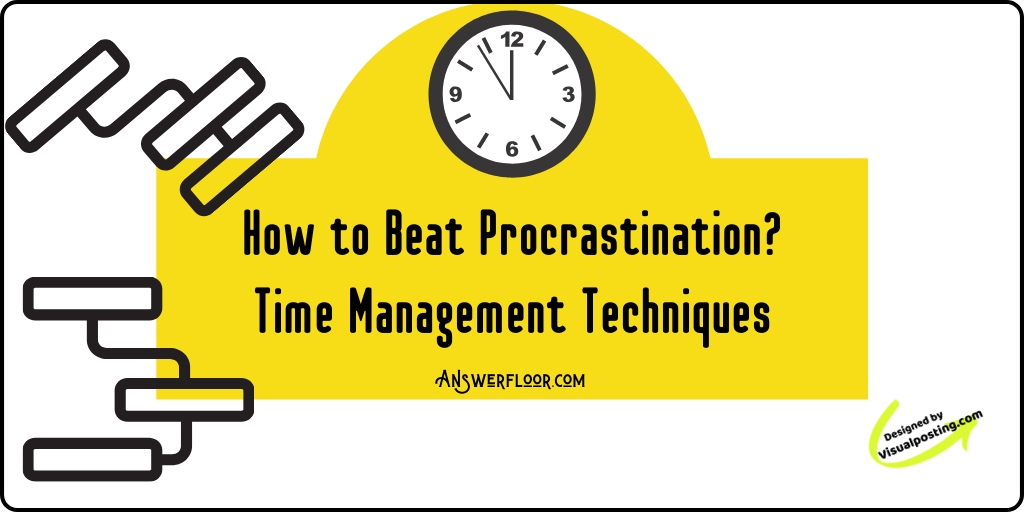
10 Simple & Effective Time Management Techniques to Beat Procrastination
With simple and easy-to-follow time-management techniques, you can easily overcome the procrastination habit.
1. “Active” in Your Spare Time
2. Divide the work into little chunks
3. ‘Short-Time’ things first
4. Get Started somewhere
5. Take Little Breaks
6. Stop Notifications for a While
7. There’s ‘No’ Perfect time
8. De-cluttered Workplace
9. Schedule & Prioritize
10. Better Idea than Avoidance
Procrastination is normal. You don’t have to feel guilty about it. To beat procrastination, allocate a specific time or a few hours in a day to do the things that you like to do.
In this way, you won’t be thinking about them while you are set to work seriously. But, the concern here is if we keep procrastinating, it puts a question on our credibility. We need to draw the line somewhere.
Good time-management skills can help you treat procrastinating habits a lot better.
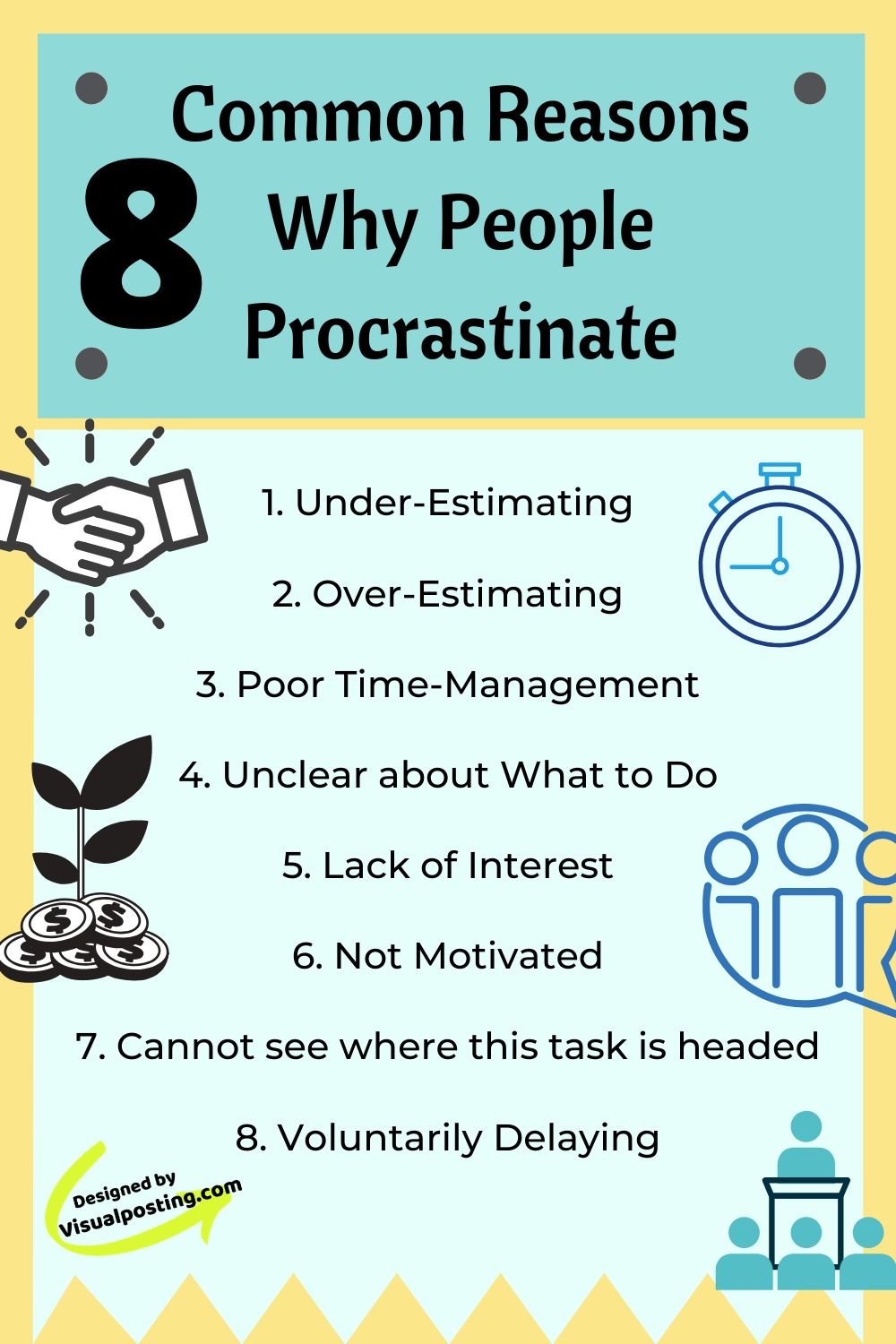
1. Under-Estimating
By underestimating tasks or anything in your personal as well as professional life, you bring in lethargy and a careless mindset. It is one of the major reasons people procrastinate. Underestimating habits lead to procrastinating. It gives the individual a feeling of less importance. As a result, postponing and ignoring start to happen.
2. Over-Estimating
Likewise, overestimating habits make people procrastinate. It quickly brings disinterest. It leads to a feeling of disconnect with the concerned project or work.
3. Poor Time-Management
It leads to procrastination, especially with students and young professionals starting their careers.
4. Unclear about What to Do
While going through this phase where we don't know what to do, we procrastinate. It happens to everyone at some point in life. It applies to your career, personal life, business, studies, etc.
Particularly concerning young people and professionals, 'unclear about what to do' can happen often. To cope with that, people tend to procrastinate.
5. Lack of Interest
With no interest or decreased interest, people start to procrastinate.
6. Not Motivated
If people start to feel that the work they do no longer motivates them, they start to procrastinate.
7. Cannot see where this task is headed
People start to procrastinate if they don't see where the work is headed. Similarly, if the work is not beneficial to them, they start to ignore it.
8. Voluntarily Delaying
It's the most common reflection of procrastination. People knew that the work had to be done. Instead, they focus on other things. If people show voluntary delay in their activities, it eventually means they are procrastinating for some reason.
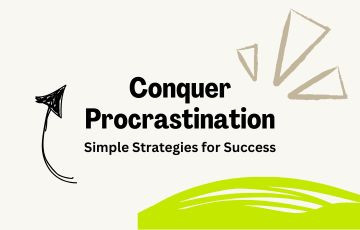
Procrastination: the universal enemy of productivity. We've all been there, putting off important tasks until the last minute, only to feel overwhelmed and stressed. But fear not! With a few simple strategies, you can beat procrastination and reclaim your time and focus.
1. Break it Down: When faced with a daunting task, break it down into smaller, manageable steps. This makes the task seem less intimidating and helps you get started.
2. Set Deadlines: Hold yourself accountable by setting realistic deadlines for each step of your project. Use tools like calendars or task management apps to track your progress.
3. Create a Routine: Establish a daily routine that includes dedicated time for work, breaks, and relaxation. Consistency is key to overcoming procrastination.
4. Eliminate Distractions: Identify and remove distractions from your workspace. Turn off notifications, close unnecessary tabs, and find a quiet environment where you can focus without interruption.
Procrastination is when you know you need to finish up a task but can still not bring yourself in doing so. There are many factors as to why a person procrastinates, but it is difficult to analyze why they end up doing it over and over again.
It could be that you don't understand the urgency of the task in hand or don't know how to begin because you cannot identify the results achieved through it.
The points given below might help you overcome the vicious cycle of procrastination.
1. Visualize your goal
Having a goal will keep you focused and energized.
2. Write down your thoughts:
Have things physically in front of you rather than having them in your brain. Writing them down will help you focus each time you read it. Put it on your refrigerator or stick it on the kitchen wall to bring you back to it.
3. Set a reminder:
Link it with daily chores like; each time you feed your pup, you'll think of your goal. This instantly makes you feel about the work you need to do to achieve your goal.
4. Have a plan:
Have a plan, and determine a deadline. Decide how much time and effort you'll have to put into it. Deadlines keep you motivated and targeted.
5. Identify the cause of procrastination:
Our mind gives tons of excuses, therefore, determine the cause of your attitude. Ask: Do you think you won't be able to give your 100% to it? Do you feel incapable of finishing the task?
6. Face your fears:
Think of a task you completed efficiently. Encourage yourself or go to a trusted friend who can help you confront your fears and take you away from them.
Procrastination is not a disease. Simply man up (not literally) and focus, and you'll find a new, more focused you.

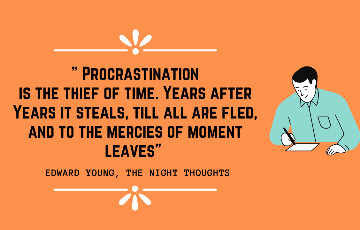
Learn about procrastination and its detrimental effects on time and productivity. Discover strategies to overcome procrastination and enhance efficiency.
We all know how Procrastination overshadows all the good habits we have. But here’s a poet, taken a step above and explained how procrastination is robbing your time. Edward Young, an English poet, has written about procrastination in his poem “The Night Thoughts”. He describes how procrastination steals your time and slowly takes away everything productive from you.
The lines in his poems say:
“Procrastination is the Thief of Time. Year after year it steals, till all are fled, and to the mercies of a moment leaves.” – Edward Young, Night Thoughts.
Procrastination is the Thief of Time: Explained
The Poet has rightly pointed out that procrastination steals away your valuable time. Slowly, procrastination can become a habit. And year after year if we look back, procrastination would have taken all productive things away from us. Except for the mercies of the present moment, all progressive things would have been lost by then.
With Procrastination:
What’s Lost is Lost!
We all have heard a line that says “what’s lost is lost”. It is true with procrastination. The time, efforts, progress, good-habits, good-routines, and all good things in our life can go in vain if we keep procrastinating. We cannot get back the time lost. Edward young rightly pointed out that “year after year, it steals”.
It steals your Years!
Imagine that if you keep procrastinating your tasks every day. By the end of the month, you will have a heap of unfinished tasks. Imagine if you keep doing this habit for three months or six months? What happens? You have lost a valuable period of the year.
Conclusion:
Edward young is clear that procrastination is the thief of time, as it takes away all the good things we have year after year till we are left with nothing but the present!
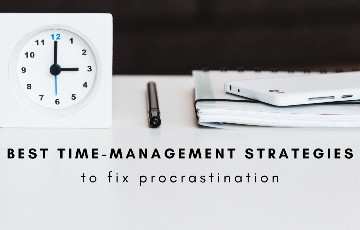
Try David Allen’s GTD (Get Things Done):
Planning, identifying priorities, simple action-plans to execute your priority tasks are important to save time to stop procrastination. David Allen’s GTD technique will help you with all that. Eventually, you manage your time well. Thoughts to procrastinate will be minimal due to the clarity and focus this GTD strategy brings.
How does the GTD Technique work?
- Capture: Gather whatever tasks that approach to your mind.
- Clarify: See if the tasks are actionable i.e. ask yourself “What possible-steps can I take to start doing tasks”.
- Sort: Place those tasks under corresponding labels like “Office”, “studies”, “Chores”, “Friends” etc.
- Reflect: By now, you have categorized all the tasks you have. Near the tasks write down the starting step you need to take.
- Engage: By now, you have written the tasks you want to do. You have categorized it conveniently. You have written the steps you need to take for beginning the tasks. The final step is, start doing them one by one.
Being a procrastinator, don’t try this GTD technique with too many tasks initially. GTD is to get you started by managing your time and fixing your procrastinating-thoughts.
2. Greg Mckeown’s “Top-Goal” Technique:
It’s a simple but productive technique for you to overcome procrastination by managing your time.
- Pick one top-goal.
- Work on it for a solid 2 hours every day preferably in the early morning hours.
- Early morning hours can give you a tamper-proof focus. You will have zero-distractions from people and things. You will feel energetic and collected in the early morning.
- Leave the rest of the day for other tasks in your to-do list.
Try for a week!
Takeaway: Procrastination is not only about Time. But, with easy time-management strategies, you can fix the procrastination-thoughts and get to work.
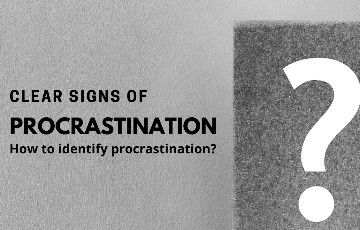
Have you thought about “How to know if I am procrastinating or not? Everything seems normal and justifiable to me? Sometimes we don’t know if we are procrastinating or just feel lazy and no-energy to do stuff. Let’s identify the common Signs of Procrastination here.
1. Worrying constantly?
You may be constantly worrying about the work you have, tasks to finish, assignments to do. But you are not taking efforts to get things done.
2. Distracted Regularly?
Do you feel you are being regularly distracted while working? Do unimportant and non-work related activities interest you? It means you are procrastinating. You don’t focus on your work, but you are interested in social media, checking emails, notifications, etc. Checking phones might seem normal, but when you do it often by halting your essential tasks, you are procrastinating. Or, you might daydream, overthink, feel aimless, etc.
3. Feeling Pointless?
Do you feel like “I don’t see a point” often? You could be procrastinating. You are avoiding the tasks by saying that it doesn’t have any value in your perception.
4. Everything Last Minute?
You are procrastinating when you leave all things to the last moment to execute or take care.
5. Not Good Enough? Don’t like doing tasks?
Disinterest and No-Motivation are common signs of procrastination. As a result, we either don’t like doing it or we don’t feel like it is good enough.
6. Escapism?
You wouldn’t have done ‘that’ task before. But you are doing it now because you are looking for an escape. You are looking for a way out and ready to do tasks that are not enthusiastic for you. This is procrastination. For instance, we start cleaning our room while there is an important assignment waiting for us to begin.

In his book “The Effective Executive,” Peter Drucker suggests a simple exercise/method that you can use to become more productive, efficient, and beat procrastinating.
Three steps in the exercise include:
Step 1: Time Log
a. Start with the date and day on top of the notebook.
b. Hour by hour record everything about what you did. You are recording what you are going through the whole day.
c. After every hour, write down what you did with a timestamp.
d. Keep doing this activity for a minimum of five days to one week. Let’s take 5 days here.
e. Keep this notebook with you always.
Ex:
(Time spent) Browsed Facebook, Instagram, watched a few episodes on Netflix.
(Time spent) worked on my assignments.
Step 2: Identify Productive and Non-Productive Work
- By evening, go through all the activities and its corresponding ‘time-spent’ logs one by one.
- For each task ask the question of “what happens if I stop doing this?”
- If your answer is “I can’t stop doing this task. It’s important for me,” then place a big dot near it.
- If your answer is “Nothing will happen if I stop doing this” for a task, then mark that task as “ZERO RETURNS.”
- Now you have tasks with “Dots” and tasks with “ZERO RETURNS.”
Step 3: Eliminate ZERO RETURNS
- The tasks marked “ZERO RETURNS” are time-wasters. This is where your time is going unproductively.
- Limit them. Or, it’s better to cut them to cut procrastination.
Benefits:
- By monitoring every day, and every hour, you now have the clarity of time you used productively and time you wasted.
- By eliminating time-wasters, you have enough time to do things that matter.
- You can beat procrastination if you become productive. This exercise is an easy and effective strategy for becoming productive.

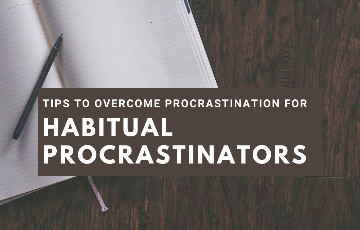
1. Do things that matter to you:
Most common reasons behind habitual procrastinators are, they always end up in the middle of things they don’t like and enjoy. It could be the work, the studies, business, environment, people, places, etc. Start by doing things that matter to you. Decorate your places in the way you like. Socialize. Add more positivity.
2. Don’t think too much:
Start. Get into action. Bring the courage to take the first step. Thinking too much before beginning any task further supports the idea to postpone and procrastinate.
3. Don’t have high expectations:
Being a habitual procrastinator, take things slowly. And don’t hold yourself by having too many expectations. Be humble in your approaches.
4. Not Freedom. Not Willpower. But Simplified Systems every day:
If you want to beat procrastination, rely on simple routines and systems every day. Systems here are having accountability, self-targets, self-goals, deadlines, etc. to stay on track. Freedom fuels your procrastination. And willpower will not get you anywhere because you aren’t mentally prepared to begin a task. This is where procrastination happens.
For habitual procrastinators, following simple-routines and systems will help in overcoming procrastination rather than the “freedom” and “willpower” which are delicate factors for you.
5. Beating procrastination is an ongoing process
Understand and accept that overcoming procrastination is an ongoing process. It needs a push every day. We cannot break procrastination over-night. People think it all goes away saying “tomorrow is a new day. I have the will. I’ll finish all my tasks”. Well, it doesn’t work like that. Procrastination needs some fixing time. Those who can’t wait and look for immediate results will become inconsistent. They procrastinate again. Procrastination takes time, solid routines, and a little push daily to overcome.

Here are 5 positive self-statements that will change you from procrastinator to productive person. The ideas were suggested By “Dr. Neil Fiore” who authored the book “The Now Habit.”
Change “I have to “to “I chose to”:
By saying “I Have to” or “I Must”, you stage a compulsion mindset. It again fuels your procrastination. Try changing the attitude as “I Choose to.” It brings freedom and gives you control over your actions and choices. You will have an advantage over task-completion.
Change “I must finish” to “When can I start?”
Productive people don’t worry about end-results. They keep thinking about what to do next, whereas procrastinators stay with the “what if” questions. Procrastinators will get easily overwhelmed and discouraged when things didn’t go their way. Word choices like “Where can I start” or “When can I start” will help fix procrastinating-mindset.
Choose, “I can take one small step” instead of “This project is so big.”
Productive people will take steps, even if it’s small. But procrastinators will be overwhelmed and struggle to even begin.
Change “I must be perfect” to “I can be perfectly human.”
Procrastinators fear results, judgments, mistakes, and opinions. But productive people will learn to accept their mistakes and understand their limitations. They learn on the go even if they lack knowledge initially. Procrastinators stay expecting perfectionism, while productive people would have traveled half the distance. Change your attitude away from perfectionism. We are all humans prone to imperfections.
Move from “I don’t have time to play” to “I must take time to play”
Make time to stay fit, to eat healthily, and stay happy. Spending time for yourself with things you like makes you happy, increases your performance, and gives something to look forward to. Happy times will make you mentally tolerable in beating procrastination.

1. You will Manage time better:
If you aren’t procrastinating, it means you have good chances of finishing tasks on time. With no time management techniques, you can easily utilize and manage your time if you don’t put off things.
2. You can avoid unnecessary hassles:
There will be no unfinished, pending tasks to bother you if you avoid procrastination. With procrastination, you bring unnecessary hassles, the burden of too much pending-tasks, and poor-scheduling. Try to be productive by beating procrastination. Your life becomes simple to handle.
3. Your performance will be enhanced:
When you give up your procrastination habit, you will have better control over your task-completion, time-management, planning, and getting productive-outcomes, etc. Your performance is increased here.
4. You will use the “present”:
Success is about what you do ‘Now’ and how you take care of your “present”. When you give up procrastination, you are positively affecting your “present”.
5. You become less defensive:
Procrastinators tend to be highly defensive and get self-protective about their actions. They are justifying an unproductive habit without their knowledge. Give up procrastination and you become less-defensive and realize what you are missing out.
6. You will decide faster:
Decisions will become faster when you give up procrastinating because you will have no cargo of unfinished business.
7. You can do what you like:
Finish your tasks now and then. Don’t procrastinate. You will get more time to enjoy little things and do what you like. Life becomes fulfilling.
8. You become more realistic:
Handling more than what we could and not saying ‘No’ brings a great deal of procrastination to you. You become honest with what you can do, how you can perform, and how productive you can get in a day when you slowly give up procrastination.

Get started. Get inspired by these quotes to beat procrastination.
1. “Procrastination is like a credit card: It’s a lot of fun until you get the bill.” – Christopher Parker.
2. “If you want to make an easy job seem mighty hard, just keep putting off doing it.” – Olin Miller.
3. “The best way to get something done is to begin.” – Unknown.
4. “Procrastination is the thief of time.” – Edward Young.
5. “If you put off everything till you’re sure of it, you will never get anything done.” – Norman Vincent Peale.
6. “The habit of always putting off an experience until you can afford it, or until the time is right, or until you know how to do it is one of the greatest burglars of joy. Be deliberate, but once you’ve made up your mind – jump in.” – Charles R. Swindoll.
7. “Doing just a little bit during the time we have available puts you that much farther ahead than if you took no action at all.” – Byron Pulsifer.
8. “When there is a hill to climb, don’t think that waiting will make it any smaller.” – Unknown.
9. “So what do we do? Anything. Something. So long as we don’t sit there. If we screw it up, start over. Try something else. If we wait until we’ve satisfied all the uncertainties, it may be too late.” – Lee Iacocca.
10. “You don’t have to see the whole staircase, just take the first step.” – Martin Luther King, Jr.
11. “The really happy people are those who have broken the chains of procrastination, those who find satisfaction in doing the job at hand. They’re full of eagerness, zest, and productivity. You can be too.” – Norman Vincent Peale.
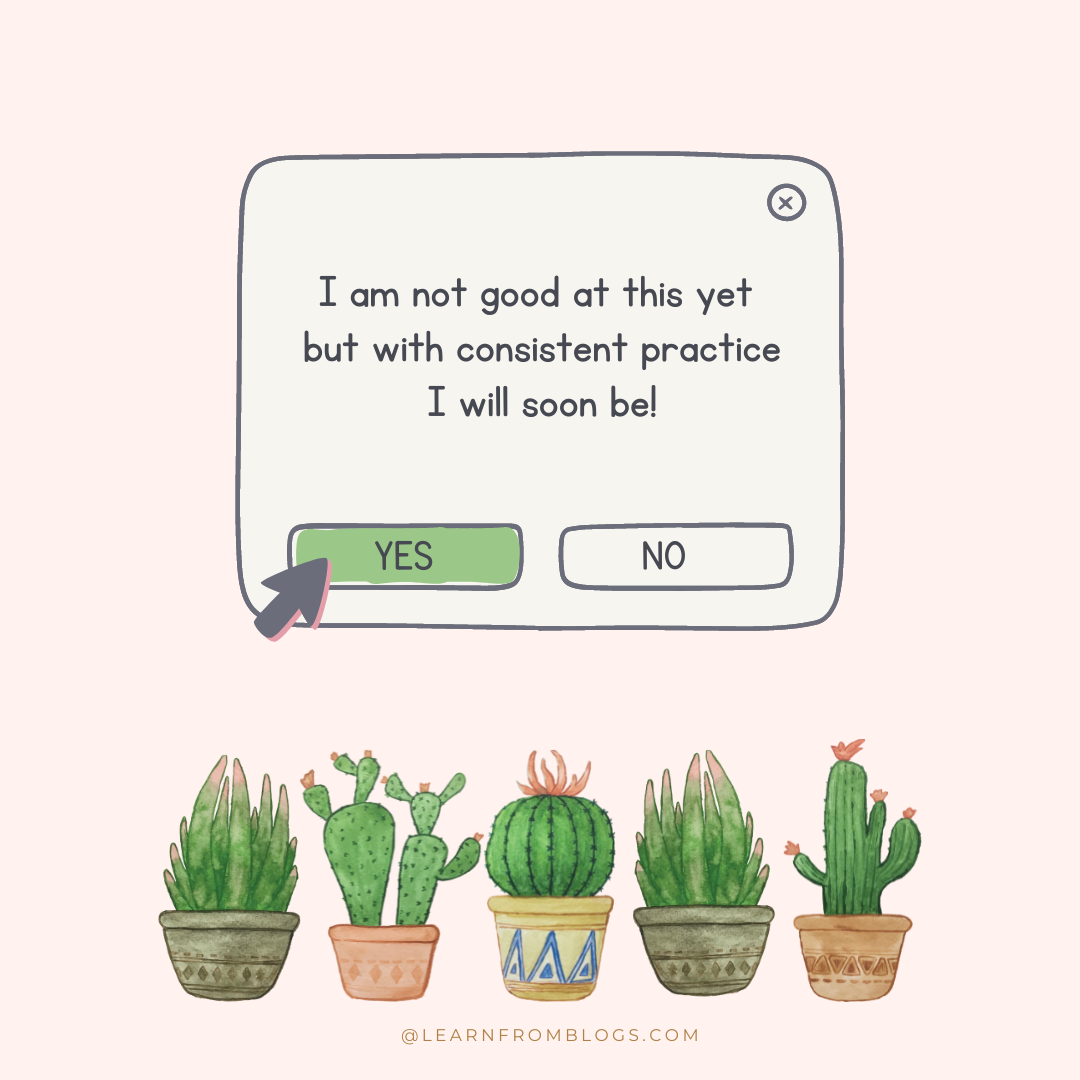
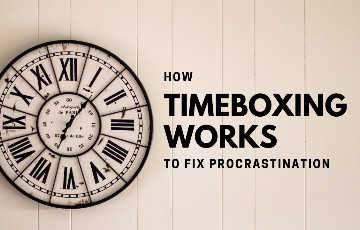
You have to get things started. That’s the first step in fixing procrastination. Timeboxing will help you do that. The Timeboxing concept is about allocating or boxing a specific set of time like 1 or 2 hours, 20-45 minutes for a task depending upon its importance and efforts.
How the Timeboxing Works?
- Take a sheet of paper. Write all the tasks waiting for you.
- Right next to every task, mention what you want to accomplish with these tasks. Define your goals here.
- Pick tasks that are important and require immediate attention. For those tasks, give priority and allocate 1 to 2.5 Hrs. of time to work on it.
- Now, identify tasks that take the minimum time say within 15-40 minutes to complete.
- If there is a difficult and lengthy task, segregate it. And, for each block allocate a minimum 20-30 minutes to manage and work. Depending upon the blocks, you can allocate more time too.
- Now you can either start from ‘minimum-time’ tasks or ‘more-time’ tasks.
- Start executing tasks.
- When the allocated time for a task is over, stop it.
- You can take a break. See what you have accomplished.
- See what you have accomplished.
- Now, move on to other tasks with another timebox.
How Timeboxing helps with procrastination?
- It will get you started.
- By knowing that you will work on a task for a little time, you will break weariness and restlessness.
- Thoughts like “It’s only an hour of work” or “just a few minutes of work” will motivate you.
- You will get something done instead of procrastinating and doing unimportant tasks.
If you are highly procrastinating and don’t know how to stop it, try Timeboxing. Work within a fixed time box and discontinue the work after the time expires.

It is said that
“We procrastinate when we seek higher-level needs. But, to overcome procrastination, we have to acknowledge, address, and fulfill lower-level needs.” We procrastinate if we feel like we don’t meet a lofty standard of needs.
Abraham Maslow came up with 5 Hierarchy of Needs. An individual should move upward, starting from level 1. It is how one can minimize procrastination habits.
5 Hierarchies of Needs:
Level 1: Psychological Needs
This is the basic and first level an individual needs to function well. It includes life-essentials like food, water, clothing, shelter, home, sleep, etc. Maslow suggests that an individual has to fulfill this basic-need first to move to further levels.
Level 2: Safety Needs
When psychological needs are met, individuals move for safety needs like a friendly society, safe/secure environments in work and home, medical care, financial security, a sense of freedom to express themselves, emotional security.
Level 3: Social Needs
If L1 and L2 are met, individuals feel comfortable to move to social needs like friendship, trust, acceptance, affiliations, and look for emotional-comfort and belongingness.
Level 4: Esteem Needs
Esteem-needs cover all important aspects like skill-developing, earn reputation through work, independence, respect from others, and the like.
Level 5: Self-Actualization (Top Level)
The need to prove themselves, fulfill their potential, being creative, developing interest are different ways of self-expressing. The interest to do what they like, to follow their passion, pursue what they desire becomes prominent at this level.
What we infer here
Maslow suggests that “Procrastination will be “none to a minimum” in the lower-levels (since it covers necessities) than higher-levels (L4-L5)”.
Unless an individual address and fulfill L1-L3, they will be highly procrastinating in higher levels like L4-L5 which encloses your work, projects, education, business, etc.
Abraham Maslow's strategy of fulfilling needs plays a role in understanding the reasons for procrastination.
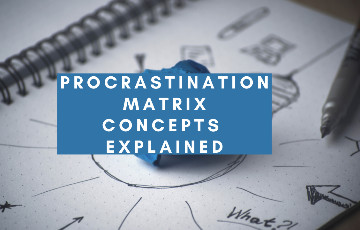
1. Vocabulary:
Use a positive choice of words regarding your tasks. Start your tasks on a positive note. Use positive affirmations like “I can do it”, “I will try it” instead of “I hate this task”.Try!
2. Reverse Calendar:
Work your way backward from final-deadline to develop an action plan. Break the tasks into chunks. Work from backward to start.
3. Filling your schedule:
Fill your schedules with non-work related tasks and activities. When all the tasks get mixed up in your schedule, you will feel like you have limited time to work on important tasks. You will start working on essential tasks ASAP.
4. Work in flow-state:
Don’t break the workflow in the name of taking breaks. Resume after quick breaks for clearing your mind. Try taking deep-breath, a quick walk, etc.
5. Fully Embraced Goals:
Try to embrace your tasks. Doing things that you don’t care or not interested in will reinforce procrastination. Sometimes you need “commitment” to finish the task given, even if you don’t like it.
6. Tiny Steps:
Enormous tasks will be overwhelming. Break it down. Achieving smaller tasks will be easy for you to avoid procrastination. Quick wins will motivate.
7. Make your rewards:
Reward yourself after completing a task. It feels good to finish a task for a pleasing reward.
8. Reframe its importance:
Stop thoughts like 'Why should I do it? It doesn’t seem important to me', ‘I couldn’t connect with the task’. Bring the attitude of “It can help people if I do this”. Connect with a task and finish it.
9. Sleep, Eat, Healthy, Exercise:
Health and fitness are important to stay motivated in whatever you do.
10. Uncover Start & End Points:
Identify the starting and ending points of your task. It will be easy to plan things.

The procrastination matrix is made of two important variables.
First: 5 Major Reasons for Procrastination
- Fear of Failing
- Lacking Motivation
- Lacking Focus
- Feeling Overwhelmed
- Unpleasant tasks.
Second: Suggested-Strategies for Overcoming Procrastination
- Vocabulary: Using Positive affirmations like “I can do it”.
- Reverse Calendar: Starting from Final Deadline and moving back towards the start.
- Filling your schedule: Packed schedule gives less time for all task completion. You will start sooner.
- Work in flow-state: Taking breaks without breaking the workflow.
- Fully Embraced Goals: Unless you strongly commit, no action will execute your work. Embrace what needs to be done.
- Tiny Steps: Break your tasks. Work small.
- Make your rewards: It’s another way to stay motivated throughout the workflow.
- Reframe its importance: A little attitude adjustment can help you in overcoming procrastination with a task.
- Sleep, Eat, Healthy, and Exercise: Healthy Mind Starts with a Healthy Body.
- Uncover Start & End Points: Identify where you have to start and what’s the end goal of a task. With these, you can easily fill the middle.
How does Procrastination Matrix work?
The Procrastination Matrix suggests appropriate strategies for different procrastination reasons.
- Feeling Overwhelmed, the suitable strategies mapped are A, B, C, D, E, and F.
- For “Unpleasant Tasks”, the strategies mapped include A, B, C, D, E, and F.
- For “Lacking Focus”, the strategies mapped are A, B, C, D, and E.
- For “Lacking Motivation”, the strategies mapped are A, B, C, D, and E.
- For “Fear of Failing”, the strategies to overcome procrastination are mapped to A to H.
Note: Draw a table. Fill the rows with “5-Reasons for Procrastination”. Fill the columns with “suitable-strategies”. For every reason, start marking a dot/mark on the suggested strategy given here. Try this if you like to visualize the procrastination-matrix.
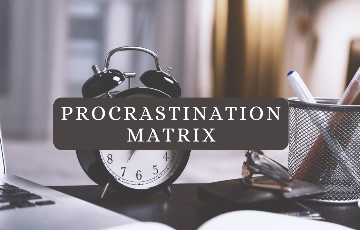
To beat procrastination, you need to cross three stages. They are:
- Identifying the Reasons for Procrastination.
- Finding suitable strategies to overcome respective Procrastination habit.
- Applying Strategies.
The procrastination matrix helps you in covering all three stages. Let’s see it.
How the Procrastination Matrix work?
Step 1:
The Procrastination Matrix has summarized 5 popular reasons which make people procrastinate namely;
- Unpleasant tasks.
- Fear of failures.
- Lack of motivation.
- Feeling Overwhelmed.
- Lack of Focus.
Pick the reason that you can associate closely.
Step 2:
By now, you will have a clear picture of what is the reason behind your procrastination. The Procrastination Matrix suggests suitable strategies for each cause of procrastination.
For Ex: If you are procrastinating due to “lack of focus”, the matrix suggests suitable strategies like:
- Fill your schedule with all kinds of tasks: By seeing it, you will think about how little time you have for completing important tasks. You will start acting quickly.
- Self-Rewards: It brings motivation throughout the task completion.
- Maintain good sleep and proper health: It upholds your mental focus.
- Work in Tiny Blocks: You can focus more.
Step 3:
This stage is up to you now. You now know why you procrastinate. You know how to solve it. All you have to do is put those strategies into action.
Conclusion:
As far as procrastination is concerned, every technique is like a trial and error. What works for you may not work for me to beat my procrastination habit. The procrastination matrix here is a generic approach. It gives the possible reasons why people procrastinate and the suitable strategies to overcome it. The procrastination matrix is useful in solving the procrastination habit step by step.

Procrastination worksheet helps you to self-analyze and identify the actual reasons behind your procrastination. And it helps you see what techniques would work for you to beat your procrastination habit.
The most popular Procrastination Worksheets are:
Worksheet Type #1 – The Self-Assessment Exercise
This worksheet type has three main columns, namely:
Column 1: My Irrational, Unnecessary Thoughts
Write all the negative, irrational thoughts that come to you when you are about to begin a task. Write about how you feel when new tasks are assigned to you. Write whatever unnecessary negative thoughts that come to your mind regarding a task.
Column 2: Why am I getting it?
Under this column, write about why you are getting such negative thoughts about a task. You may get it for reasons like “you don’t like the person assigning the task”, “the task is not worthy for you”, “you don’t like to work with this team-member”, “The task is too demanding for you”, “this task makes you feel undermined” etc. By writing the reasons that bring you negative thoughts, you will identify the root of the problem.
Column 3: Ideas
Write about what you can do to overcome your thoughts and problems. For Ex: if you feel you are being undermined, then write what you can do about it. It can be solutions like “I like to talk to my senior and let them know I’m capable” or “I will show my capability through quick completion and quality outputs” etc. Write your version of ideas about what you can do. Instead, don’t show your aversion through procrastination.
Takeaway:
The Self-Assessment worksheet has helped many people to identify their root problems and overcome them. The only condition is, be genuine in filling up the columns. It is how this procrastination worksheet works.

1. The KANBAN Technique:
They developed 'KANBAN' in the 1940s for the brand Toyota to improve its overall performance. It’s the simple and best technique to measure your progress. Being a college student, it’s important to monitor your progress to overcome procrastination.
The KANBAN Technique has 4 Quadrants:
Q1: Backlog
Define all the tasks you have. The topics you want to cover, assignment works, the progress of your projects, materials to gather, stages of your research work, subjects to study, and all other activities you have.
Q2: To-Do
From the Backlog Quadrant, move important/essential tasks to be done ‘Today’ and tasks you will ‘Work on now’. Start doing them.
Q3: In Progress
Mention the progress of your task. Also, mention the tasks you are currently working on.
Q4: Done
Update/Move the tasks from Q3 to Q4 after completing it. The Q4 will now have the list of tasks you have completed so far.
Moving tasks from Q1 to Q 4 will be a motivation for you. It helps you monitor your progress and see where you are lagging. If you are a college student, this KANBAN technique will be an operative way to beat procrastination.
Benefits:
- You can use this KANBAN separately for your assignments, research, and projects works.
- You can prepare a separate KANBAN quadrant for studies.
- You can use it for everyday planning.
- Monitoring progress will be easy.
- It acts as a reminder to you.
2. POMODORO Technique:
Exam time procrastination will be high. Try the POMODORO method for your studies.
3. NO Last Minute:
Have a regular study time. Assign a few hours of your convenience with zero-distraction for it. The last-minute seems fun with friends. But, when the deadline comes, you will surely feel about “I could have done it even better”.

1. Invested everything into your business?
By investing your life-savings on your business dream, you will be more prone to avoiding the risk that could lose money. It leads to delayed decision-making. Undertaking challenging projects or orders will become highly debatable. You procrastinate and focus only on existing business-setup.
How to fix this procrastination reason?
- Try to have a secondary income niche. There are entrepreneurs and small-business owners who work and do their business.
- The initial business may not be profitable. It’s another reason to have the second income to take care of your needs.
- Before you invest everything, analyze all the risk factors associated. Backup money.
Not willing to risk money or lose investments makes small-business owners and entrepreneurs procrastinate.
2. Feel exhausted?
Sometimes running your own business can frazzle you. Customer-services could be slammed. Checking the warehouse, undertaking bulky-orders, problems like slow web-pages, customers not going past the homepage, etc. can all happen at once. The brain procrastinates because it likes to skip the stress that’s happening.
How to fix this?
- Delegate your tasks. Small-business owners have this issue because they would be compactly staffed. The owner might handle 80-90 percent of work.
- Take breaks. When you resume your work, you will have more focus.
- Plan your day. Be clear about the tasks you want to achieve today.
- Convey what you can handle.
- It’s okay to send “we will get back to you” sometimes.
You can’t handle everything every time.
3. Social-Media:
If you feel like procrastinating, go to your official social media handles. Start interacting with your customers. Get to know what’s happening. You might resume your work with an active mindset after a friendly conversation with customers.
The ground reality with running small-business could be entirely different, but these simple tips and ideas could help you.


